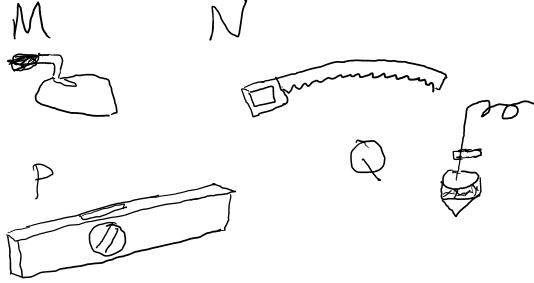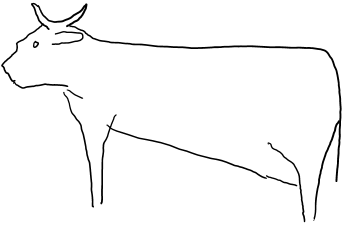INSTRUCTIONS
- This paper consists of three sections A, B and C.
- Answer all questions in sections A and B.
- Answer any two questions from section C in the attached foolscaps.
SECTION A (30 MARKS)
- Give four ways by which the soil loses its fertility. (4 marks)
-
- List three surface water sources found in a farm. (3 marks)
- Give three reasons for treating water before use in a farm. (3 mark)
- Name two various breeds of each of the following.
- Beef cattle. (1mark)
- Rabbits (1 mark)
- Dairy goats (1 mark)
-
- Give four reasons why the use of fire should be discouraged in clearing land during seedbed preparation. (2 marks)
- Give two reasons for secondary cultivation. (2 marks)
- State two characteristics of a fertile soil. (2 marks)
- List the tools used for each of the following.
- Smoothening concrete floor during plastering. (1 mark)
- Administering liquid drugs through the mouth of an animal. (1 mark)
- Lifting soil and manure. (1 mark)
- Checking whether a cow has mastitis. (1 mark)
- Give two reasons why soil is important to crops. (2 marks)
- State two ways in which agriculture contribute directly to the development of industries. (2 marks)
- What do you understand by the term Agroforestry. (1 mark)
- State who species of camels. (2 marks)
SECTION B (20 MARKS)
- Diagrams M, N, P and Q represents some farm tools.
- Identify the tools M, N, P and Q. (4 marks)
- Give the use of each the tools named above. (4 marks)
- State two maintenance practices that should be carried out on tool M. (1 mark)
- The diagram below illustrates the general shape of a cattle bread. Study it carefully and answer the questions that follow:-
- Identify the type of breed illustrated by the above shape. (1 mark)
- Give an example of a breed in (a) above. (1 mark)
- State four physical characteristics of the type of breed identified (b) above. (4 marks)
- The diagram below illustrates a fined seedbed after tertiary operation done during land preparation. Study it carefully and answer the questions that follow.
- Name the tertiary operation carried out on the seedbed. (1 mark)
- State two importance of the tertiary operation named in (a) above. (2 marks)
- List two factors that determine the number of times a farmer would harrow his land. (2 marks)
SECTION C 40MKS
ANSWER ANY TWO QUESTIONS IN THIS SECTION
-
- Describe four methods of land clearing. (8 marks)
- Describe five importance of primary cultivation. (5 marks)
- Describe seven factors that determine the choice of tools and equipment used in primary cultivation. (7 marks)
-
- Discuss the process of water treatment. (12 marks)
- Explain any four agricultural practices which lead to water pollution. (8 marks)
-
- Give eight differences between exotic cattle breeds (Bos Taurus) and indigenous cattle breeds, (Bos indicus). (8 marks)
- Discuss the importance of livestock to a Kenyan farmer. (10 marks)
- Give two examples of indigenous cattle breed. (2mks)
MARKING SCHEME
SECTION A (30 MARKS)
- Give four ways by which the soil loses its fertility. (4 marks)
- Soil erosion
- Leaching
- Utilization by crops
- Volatilization
-
- List three surface water sources found in a farm. (3 marks)
- Capillary water
- Superfluous water
- Hygroscopic water
- Give three reasons for treating water before use in a farm. (3 mark)
- To improve taste
- To remove bad smell
- To kill disease causing organisms
- To soften water
- To remove sediments
- List three surface water sources found in a farm. (3 marks)
- Name two various breeds of each of the following.
- Beef cattle. (1 mark)
- Hereford
- Charolais
- Aberdeen Angus
- Rabbits (1 mark)
- Chinchilla
- New Zealand white
- California white
- Earlops
- Dairy goats (1 mark)
- Saanen
- Togenburg
- Jamnapuri
- Alpine
- Beef cattle. (1 mark)
-
- Give four reasons why the use of fire should be discouraged in clearing land during seedbed preparation. (2 marks)
- Fire may spread to other unintended areas
- Increases soil temperature
- Kills soil microorganisms/ burns soil organic matter
- Increases volatization of volatile nutrients
- Give two reasons for secondary cultivation. (2 marks)
- To kill weeds germinated after primary cultivation
- To break large soil clods to suitable tilth
- To make subsequent field activities easy
- State two characteristics of a fertile soil. (2 marks)
- Has organic matter/humus
- Has adequate nutrients to support crop growth
- Has good drainage
- Give four reasons why the use of fire should be discouraged in clearing land during seedbed preparation. (2 marks)
- List the tools used for each of the following.
- Smoothening concrete floor during plastering. (1 mark)
- Steel float
- Administering liquid drugs through the mouth of an animal. (1 mark)
- Drenching gun
- Lifting soil and manure. (1 mark)
- Pitch fork
- Checking whether a cow has mastitis. (1 mark)
- Strip cup
- Smoothening concrete floor during plastering. (1 mark)
- Give two reasons why soil is important to crops. (2 marks)
- Provision of nutrients
- Provides air
- Provides water
- Anchorage
- State two ways in which agriculture contribute directly to the development of industries. (2 marks)
- Provides a market for raw materials /farm products
- Provides processed products to farmers
- What do you understand by the term Agroforestry. (1 mark)
- It is a practice of growing trees, crops and keeping livestock
- State who species of camels. (2 marks)
- Dromedary
- Bactrian
SECTION B (20 MARKS)
- Diagrams M, N, P and Q represents some farm tools.
- Identify the tools M, N, P and Q. (4 marks)
- M - Trowel/garden trowel/masons trowel
- N - Pruning saw
- P - Spirit level
- Q - Plumb bob
- Give the use of each the tools named above. (4 marks)
- M - Scooping mortar during plastering
- N - cutting hard wood branches when pruning
- P - checking the horizontalness of a wall during construction
- Q - checking the verticalness of a wall during construction
- State two maintenance practices that should be carried out on tool M. (1 mark)
- Cleaning after use when dirty
- Welding broken handles
- Oiling exposed metallic parts before long storage
- Identify the tools M, N, P and Q. (4 marks)
- The diagram below illustrates the general shape of a cattle bread. Study it carefully and answer the questions that follow: -
- Identify the type of breed illustrated by the above shape. (1 mark)
- Dairy cattle breed
- Give an example of a breed in (a) above. (1 mark)
- Jersey/Guernsey/Ayrshire/Friesian
- State four physical characteristics of the type of breed identified (b) above. (4 marks)
- Wedge shaped
- Well developed udder
- Prominent milk veins
- Straight topline
- Large stomach
- Little flesh on body
- Identify the type of breed illustrated by the above shape. (1 mark)
- The diagram below illustrates a fined seedbed after tertiary operation done during land preparation. Study it carefully and answer the questions that follow.
- Name the tertiary operation carried out on the seedbed. (1 mark)
- Ridging
- State two importance of the tertiary operation named in (a) above. (2 marks)
- Allows rapid expansion of tubers
- Used to conserve moisture
- Used to control soil erosion
- List two factors that determine the number of times a farmer would harrow his land. (2 marks)
- State of land after primary cultivation
- Type of tilth
- Type of crop to be planted
- Availability of capital
- Name the tertiary operation carried out on the seedbed. (1 mark)
SECTION C (40MKS)
ANSWER ANY TWO QUESTIONS IN THIS SECTION
-
- Describe four methods of land clearing. (8 marks)
- Tree felling using an axe/ power saw to cut down trees
- De-stumping involves uprooting a tree stump
- Slashing using a panga or slasher to cut down long grass or old crop residue
- Burning vegetation is set on fire
- Use of non- selective herbicides applied to vegetation that kills the plants they come into contact with
- Describe five importance of primary cultivation. (5 marks)
- To kill weeds
- To bring leached nutrients to the surface
- To expose soil borne pests and parasites
- To make subsequent operations easy
- To encourage root penetration
- To encourage infiltration of water
- To aerate the soil
- To incorporate organic matter in the soil
- Describe seven factors that determine the choice of tools and equipment used in primary cultivation. (7 marks)
- Condition of land
- Type of tilth required
- Depth of cultivation
- Moisture conditions of the soil
- Slope of land
- Size of planting material
- Presence or absence of a hard pan
- Describe four methods of land clearing. (8 marks)
-
- Discuss the process of water treatment. (12 marks)
- Filtration; done at the source using sieves with different mesh sizes to remove large particles
- Softening; by adding soda ash to remove magnesium and calcium ions which make the water hard
- Coagulation and sedimentation; by adding alum which forms a gel that traps suspended particles; the suspended particles sink to the bottom of a sedimentation tank
- Filtration; done using a sand filter to remove suspended particles that have been coagulated
- Chlorination; done by adding chlorine which kills disease causing micro-organisms
- Explain any four agricultural practices which lead to water pollution. (8 marks)
- Excessive use of agrochemicals such as fertilizers and pesticides
- Poor cultivation practices such as ploughing along the slope causing erosion which pollutes water
- Dumping of agricultural wastes in water bodies
- Washing of spraying equipment in water bodies after using them to apply chemicals to crops or livestock
- Overcultivation
- Overgrazing
- Cultivation along river banks
- Discuss the process of water treatment. (12 marks)
-
- Give eight differences between exotic cattle breeds (Bos Taurus) and indigenous cattle breeds, (Bos indicus). (8 marks)
Exotic cattle Indigenous cattle Highly productive Low productivity Early maturity Late maturity Short calving period Long calving period Lack dewlap Have dewlap Lack hump Have hump Prone to tropical diseases Tolerant to tropical diseases Intolerant to high temerature Tolerant to high temperature Heavy feeders Light feeders Walk shorter distances Walk over longer distances - Discuss the importance of livestock to a Kenyan farmer. (10 marks)
- Source of income when sold
- Provision of farm power
- Source of food
- Used in cultural practices such as paying dowry
- Provide manure
- Give two examples of indigenous cattle breed. (2mks)
- Zebu
- Boran
- Sahiwal
- Ankole
- Give eight differences between exotic cattle breeds (Bos Taurus) and indigenous cattle breeds, (Bos indicus). (8 marks)
Download Agriculture Questions and Answers - Form 1 End Term 3 Exams 2023.
Tap Here to Download for 50/-
Get on WhatsApp for 50/-
Why download?
- ✔ To read offline at any time.
- ✔ To Print at your convenience
- ✔ Share Easily with Friends / Students




